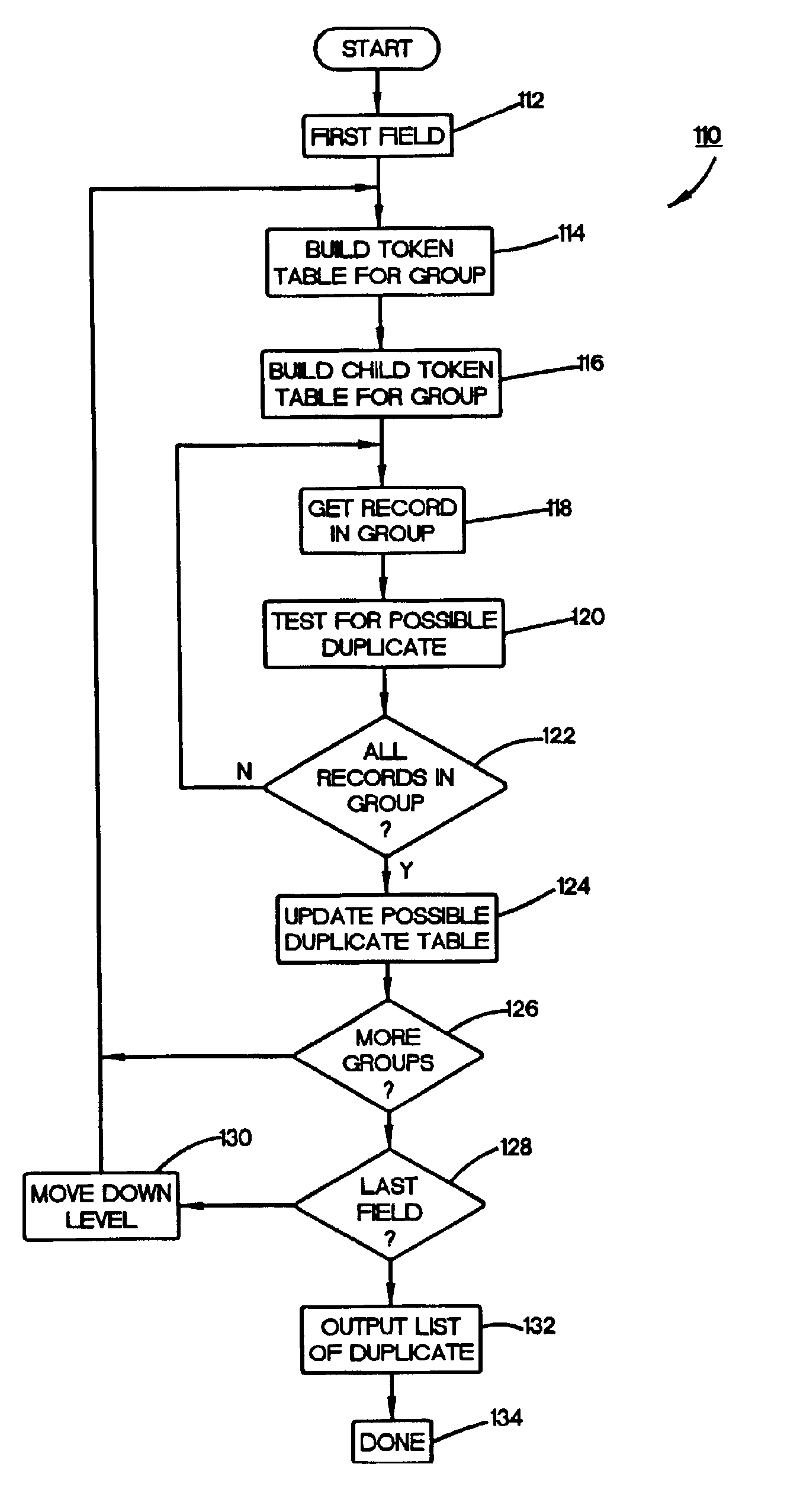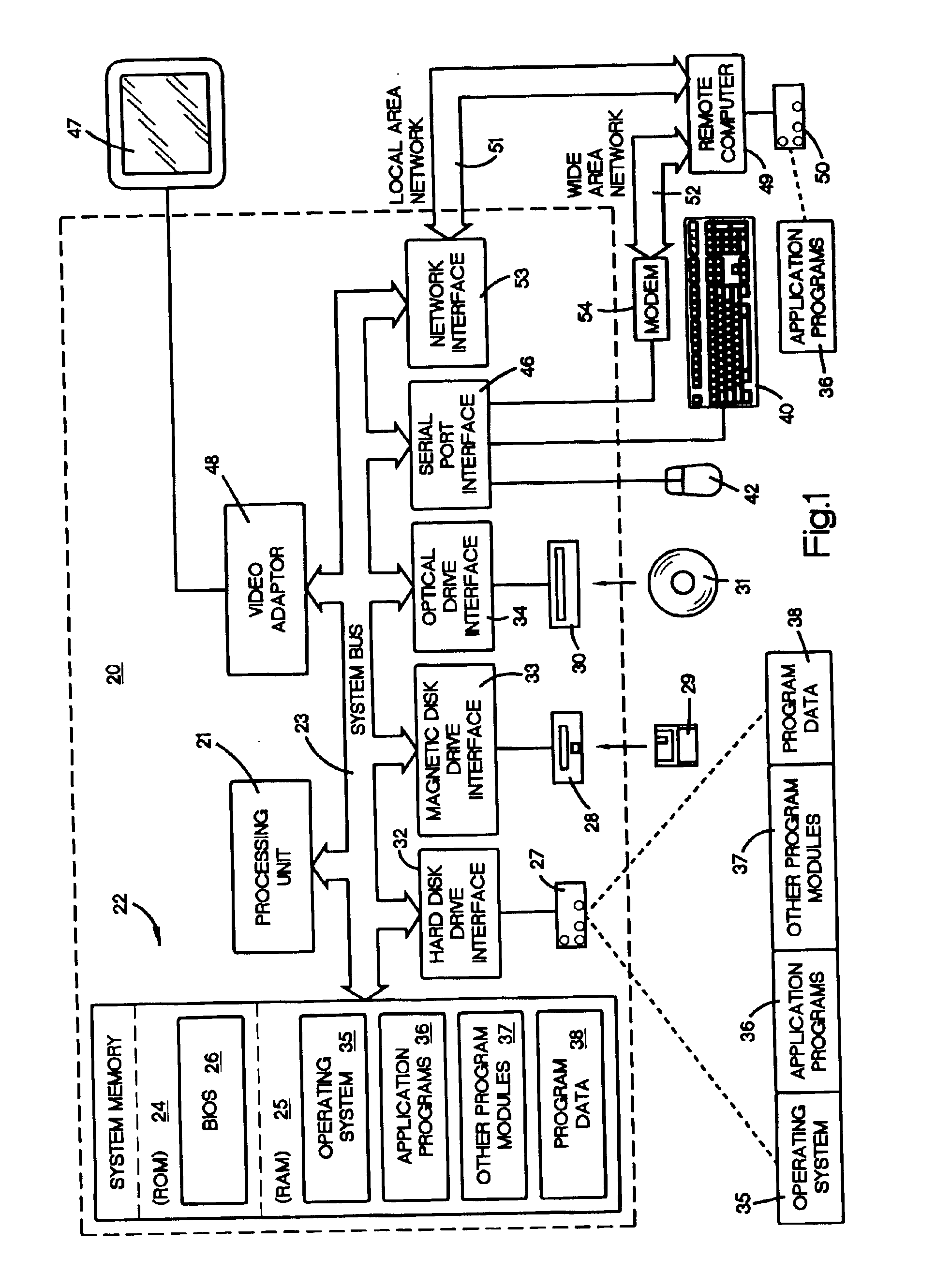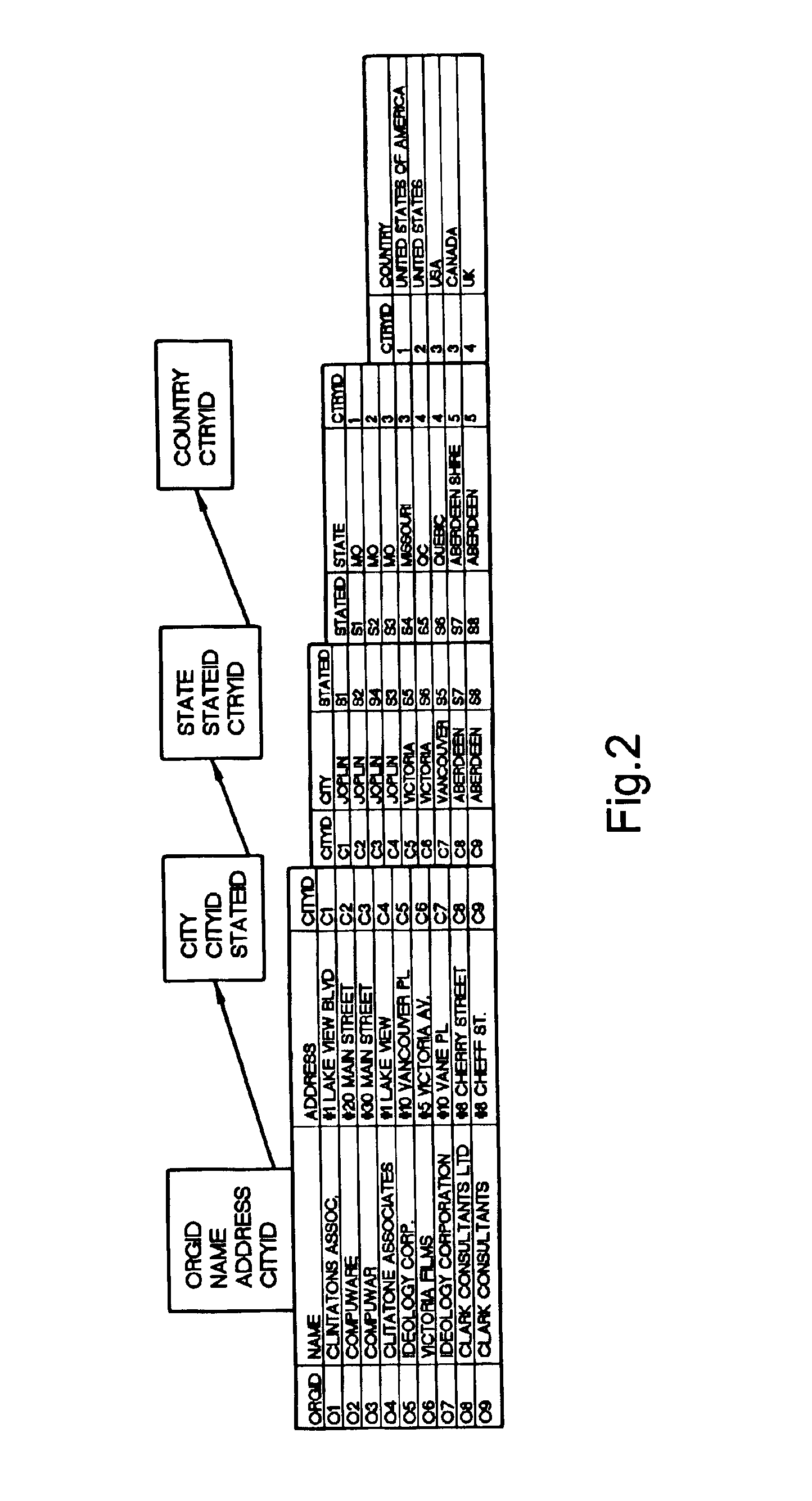Detecting duplicate records in database
- Summary
- Abstract
- Description
- Claims
- Application Information
AI Technical Summary
Benefits of technology
Problems solved by technology
Method used
Image
Examples
example 2
[0069]Consider the example in FIG. 2. We process the State relation grouped with the Country relation. Suppose {United States, United States of America, and USA} is a set of duplicates on the Country relation. For the group of State tuples joining with USA and its duplicates, the children table contains one entry: {[child-tuple={Joplin, frequency=3, tupleId-list=]}.
[0070]Note: Recall that the frequency of a child tuple in Bc(G) is based only on its descriptive attribute value combinations and ignores the key attributes in Ri−1. In the above example, the tuple Joplin has a frequency 3 because we ignore the CityId attribute values.
[0071]Building the Children Table: The procedure is similar to that of building the token table except for the crucial difference which arises because the union of all children sets Bc(G) can be large, e.g., all street addresses in the city of Illinois, Chicago. Therefore, we first obtain all children of G tuples with frequency greater than 1 and add them to...
PUM
 Login to View More
Login to View More Abstract
Description
Claims
Application Information
 Login to View More
Login to View More - R&D
- Intellectual Property
- Life Sciences
- Materials
- Tech Scout
- Unparalleled Data Quality
- Higher Quality Content
- 60% Fewer Hallucinations
Browse by: Latest US Patents, China's latest patents, Technical Efficacy Thesaurus, Application Domain, Technology Topic, Popular Technical Reports.
© 2025 PatSnap. All rights reserved.Legal|Privacy policy|Modern Slavery Act Transparency Statement|Sitemap|About US| Contact US: help@patsnap.com



